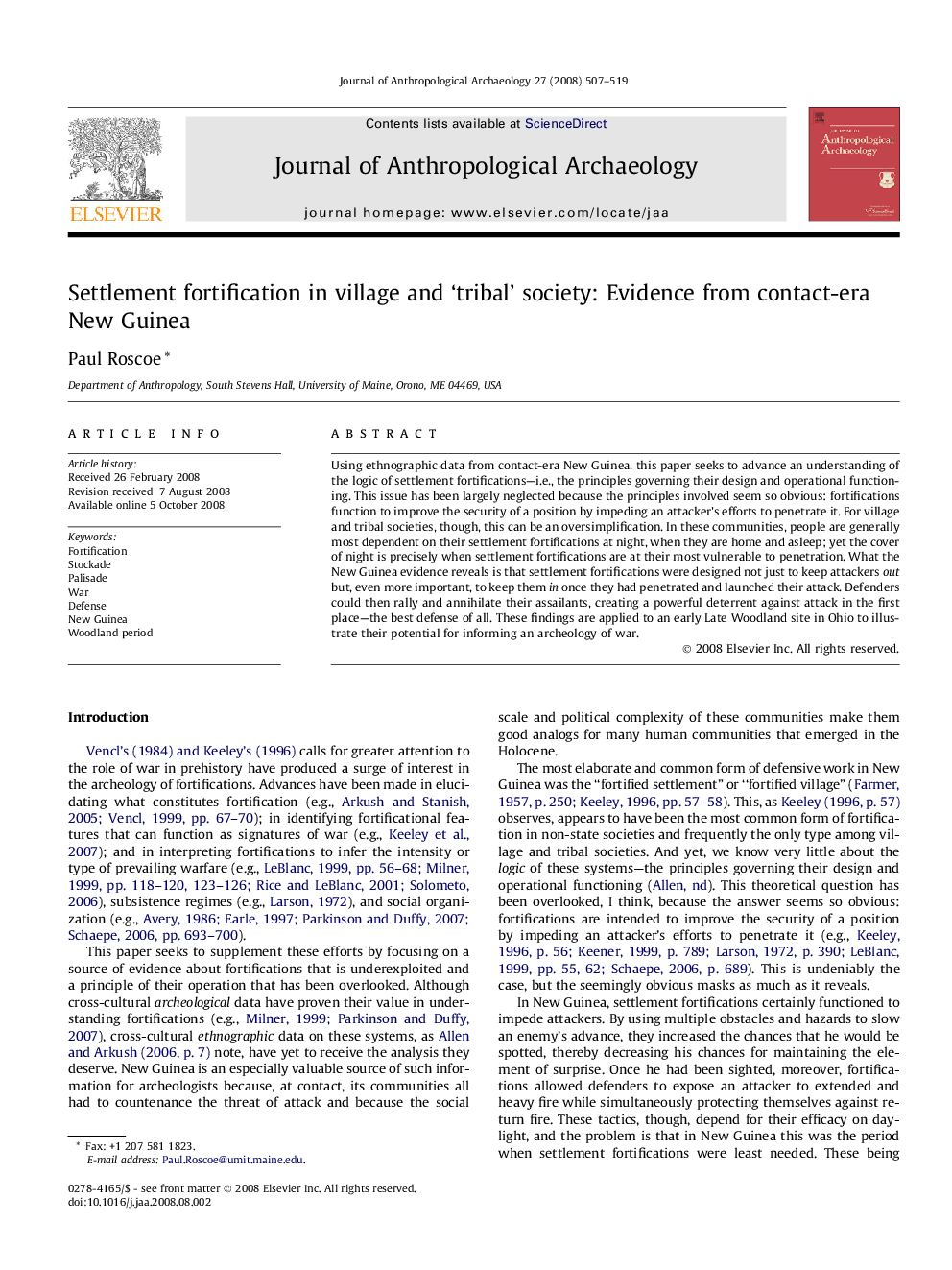| Article ID | Journal | Published Year | Pages | File Type |
|---|---|---|---|---|
| 1035129 | Journal of Anthropological Archaeology | 2008 | 13 Pages |
Using ethnographic data from contact-era New Guinea, this paper seeks to advance an understanding of the logic of settlement fortifications—i.e., the principles governing their design and operational functioning. This issue has been largely neglected because the principles involved seem so obvious: fortifications function to improve the security of a position by impeding an attacker’s efforts to penetrate it. For village and tribal societies, though, this can be an oversimplification. In these communities, people are generally most dependent on their settlement fortifications at night, when they are home and asleep; yet the cover of night is precisely when settlement fortifications are at their most vulnerable to penetration. What the New Guinea evidence reveals is that settlement fortifications were designed not just to keep attackers out but, even more important, to keep them in once they had penetrated and launched their attack. Defenders could then rally and annihilate their assailants, creating a powerful deterrent against attack in the first place—the best defense of all. These findings are applied to an early Late Woodland site in Ohio to illustrate their potential for informing an archeology of war.
